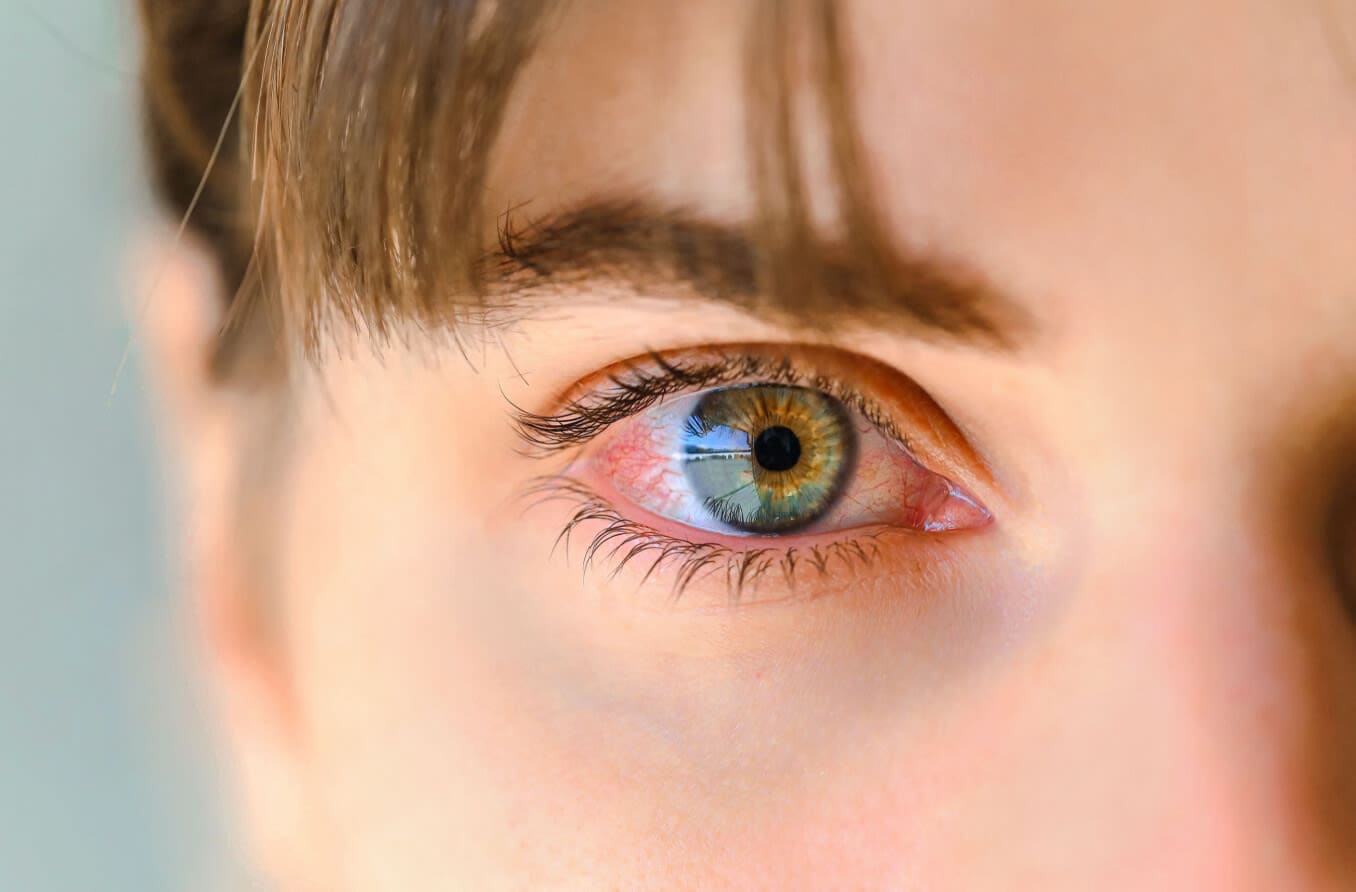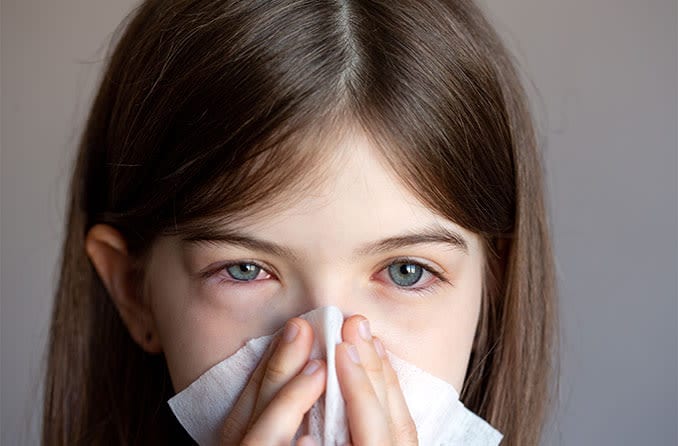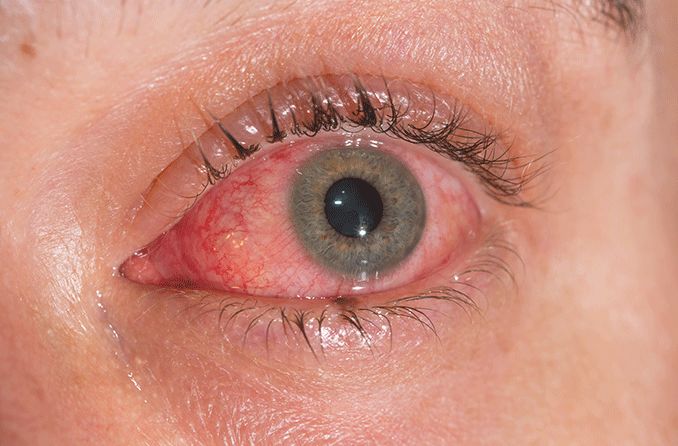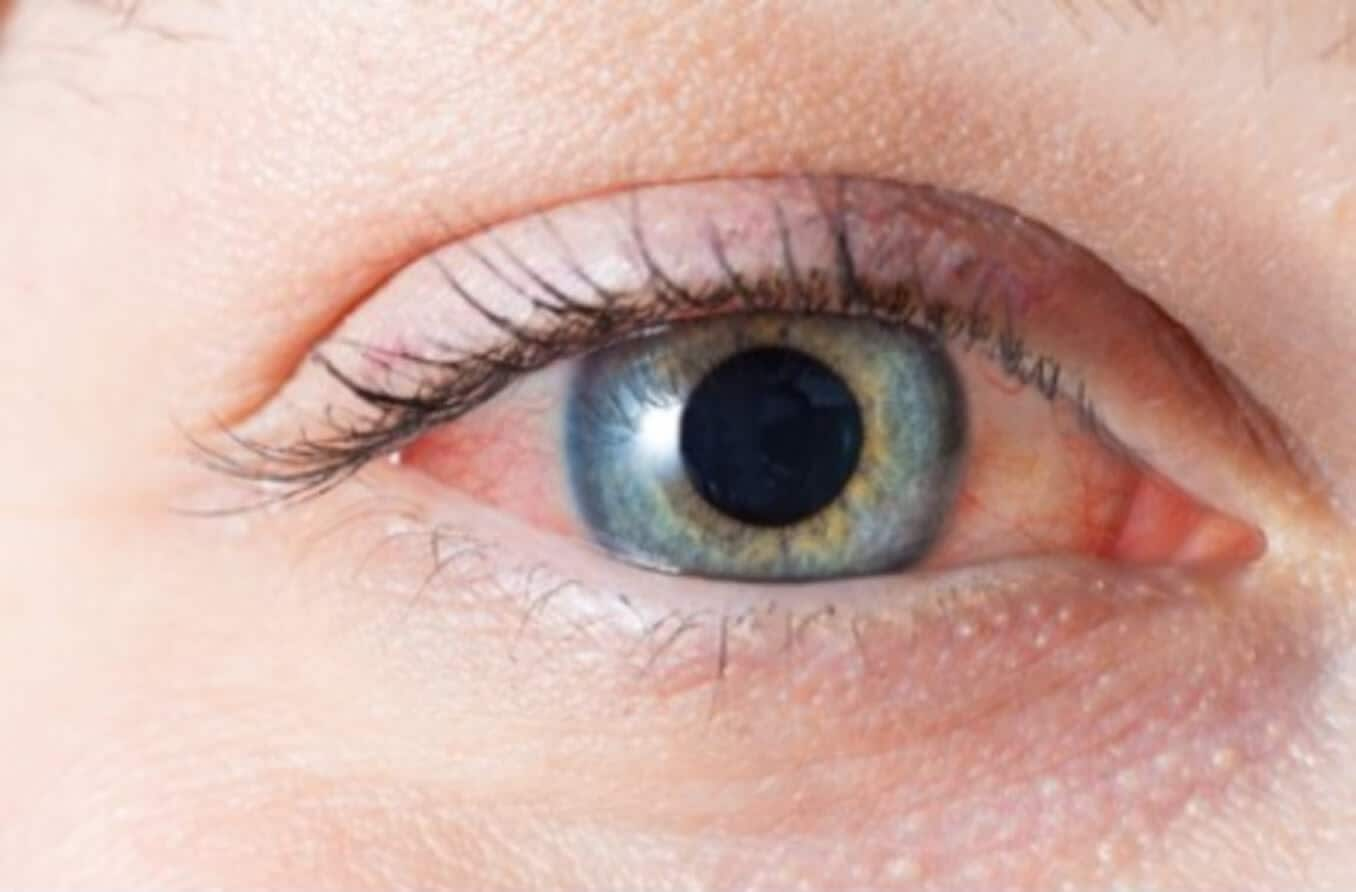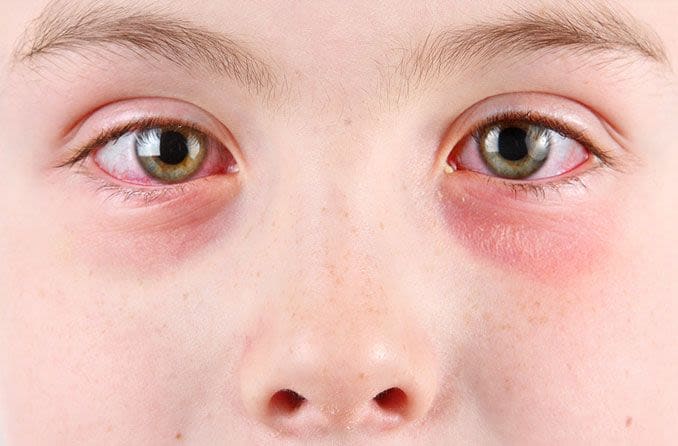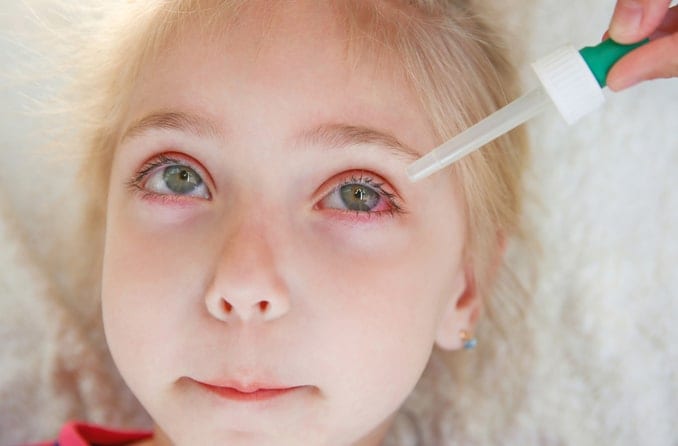Conjunctivitis, often called pink eye, is a common eye condition in babies where the thin, clear membrane that covers the white of the eye and the inside of the eyelids (the conjunctiva) becomes inflamed due to infection or irritation. Pink eye can affect one or both eyes and falls under one of four types of conjunctivitis, either contagious or non-contagious:
Contagious types of pink eye
Bacterial conjunctivitis can be attributed to illness-causing bacteria, similar to the kind that causes strep throat or staph infection.
Because it’s bacterial, this type of conjunctivitis is contagious. Your baby likely caught it by touching or playing with a contaminated object or by having contact with an infected person.
Viral conjunctivitis is caused by the same bug that causes the common cold and other viruses. This type of pink eye, which is sometimes called an eye cold, is very contagious, so it’s possible your baby caught the virus from someone else.
It may also be that they have a virus of their own that has spread to or manifested in their mucous membranes, which are found in the nose, mouth, eyelids and windpipe, as well as many other places.
Non-contagious types of pink eye
Allergic conjunctivitis happens when an individual is exposed to an allergen like mold, pet dander, dust or pollen. For those who are sensitive to them, these triggers can cause conjunctivitis-like symptoms, such as red, watery, puffy eyes. Other allergy-related symptoms, such as sneezing and a runny nose, are also typically present.
Allergic pink eye is not contagious and will likely only occur when your baby is exposed to allergens they’re sensitive to (e.g., the changing of the season or certain environments where allergens are present).
Irritant conjunctivitis occurs when irritants, such as smoke (either from tobacco or fire) or chlorine (water or airborne), trigger a reaction in the eyes. Reactions typically consist of pink or red eyes, accompanied by burning and watering.
Irritant pink eye is not contagious and can be prevented as long as you avoid known triggers that irritate your baby’s eyes.
SEE RELATED: Eye allergies vs. pink eye: What’s the difference?
Pink eye in newborns
Newborns are especially susceptible to contagious forms of pink eye. If the mother has a venereal disease and delivers the baby naturally, the virus or bacteria can be transmitted to the baby’s eyes from the birth canal, resulting in neonatal conjunctivitis. According to the Centers for Disease Control and Prevention, the most common types of newborn conjunctivitis include:
Inclusion (chlamydial) conjunctivitis
Gonococcal conjunctivitis
Chemical conjunctivitis
Other types of bacterial and viral conjunctivitis
It’s for this reason that doctors immediately apply antibiotic eye drops or ointment to a baby’s eyes after birth.
How to identify conjunctivitis
While some symptoms of pink eye are universal — such as having the whites of the eyes appear pink or red — other symptoms are type-specific and can help you identify pink eye in babies.
Common symptoms associated with viral and bacterial pink eye can be present in one or both eyes and can include:
Watery eyes
Eye discharge that appears white, yellow or green and often crusts your baby’s eyes shut while they sleep
Itchiness that prompts your baby to rub their eyes
Light sensitivity
Swollen or puffy eyelids
With allergic or irritant conjunctivitis, redness, itchiness and watering are typically the only symptoms present. Additionally, irritant and allergic pink eye symptoms are always present in both eyes.
SEE RELATED: Eye discharge in toddlers and babies >
Treating pink eye in babies
While treatment methods for pink eye depend on the type your baby has, keeping their eyes clean is the best starting point. Frequently wash your child’s eyelids with a gentle face cloth and warm water (tap water works just fine) to help soothe and clean the area. To prevent spreading the conjunctivitis to others, do not allow anyone else in the family to use the same washcloth.
Bacterial pink eye
Bacterial pink eye can be treated with antibiotic eye drops or ointment. It’s important to continue treatment for the entire duration the doctor prescribes, even if the condition of your baby’s eye infection seems to improve.
If your doctor prescribes your baby eye drops, you may find it tricky to administer them. We recommend using clean hands to drip the eye drops into the corner of your baby’s closed eye. When your baby’s eyes open, the antibiotics will naturally trickle onto the surface of the eye.
Antibiotic ointment is another effective treatment option for bacterial conjunctivitis. To apply, have your baby lying down comfortably. Use clean hands to gently pull down the lower lid until you see a tiny gap between the lid and the eyeball. Without directly touching the eye, run the nozzle of the ointment tube across that gap and squeeze out the ointment.
If this method is unsuccessful, apply the ointment to the corners of the eyes and allow it to melt into the rest of the eye.
Viral pink eye
Viral infections, including pink eye, cannot be treated with an antibiotic and must run their course. However, some at-home and natural remedies for pink eye may help relieve symptoms.
These include using a warm washcloth to loosen and remove any crusted discharge around the eyes and a cold compress (wrapped in a thin towel or cloth) to reduce eye tissue swelling.
Allergic pink eye
The best way to prevent allergic pink eye is to identify the allergen causing the reaction and avoid your baby’s exposure to it. Depending on the severity, frequency and number of symptoms your baby experiences, your pediatrician may prescribe an oral antihistamine or antihistamine eye drops.
Irritant pink eye
Flushing the irritant from the eye is the most effective way to treat irritant conjunctivitis. While the eye does this naturally by producing tears, prolonged symptoms may require more thorough flushing.
The safest way to do this is to rinse your baby’s eyes with a gentle stream of sterile saline solution or single-dose, preservative-free artificial tears, such as Refresh Plus (Allergan). Avoid using tap water, as it can contain bacteria and other pathogens that can cause a serious eye infection, including Acanthamoeba keratitis.
When to see a doctor
Getting advice from an eye care professional for your baby’s pink eye is always recommended, as symptoms such as eye discharge can also be a sign of blocked tear ducts. Additionally, having an eye doctor examine your baby’s eyes can bring attention to other vision issues that parents don’t always know to look for.
Infancy is a crucial time for eye and vision development. If you notice changes in your baby’s eyes — pink eye symptoms or otherwise — you should schedule a pediatric eye exam with a trusted eye doctor.
SEE RELATED: Pink eye medicine: OTC and prescribed


